What Affects Wind Generation?
Wind results from the movement of air due to atmospheric pressure gradients. Wind flows from regions of higher pressure to regions of lower pressure. The larger the atmospheric pressure gradient, the higher the wind speed and thus, the greater the wind power that can be captured from the wind by means of wind energy-converting machinery.
The generation and movement of wind are complicated due to a number of factors. Among them, the most important factors are uneven solar heating, the Coriolis effect due to the earth’s self-rotation, and local geographical conditions.
Uneven solar heating
Among all factors affecting the wind generation, the uneven solar radiation on the earth’s surface is the most important and critical one. The unevenness of the solar radiation can be attributed to four reasons.

First, the earth is a sphere revolving around the sun in the same plane as its equator. Because the surface of the earth is perpendicular to the path of the sunrays at the equator but parallel to the sunrays at the poles, the equator receives the greatest amount of energy per unit area, with energy dropping off toward the poles. Due to the spatial uneven heating on the earth, it forms a temperature gradient from the equator to the poles and a pressure gradient from the poles to the equator. Thus, hot air with lower air density at the equator rises up to the high atmosphere and moves towards the poles and cold air with higher density flows from the poles towards the equator along the earth’s surface. Without considering the earth’s self-rotation and the rotation-induced Coriolis force, the air circulation at each hemisphere forms a single cell, defined as the meridional circulation.
Second, the earth’s self-rotating axis has a tilt of about 23.5° with respect to its ecliptic plane. It is the tilt of the earth’s axis during the revolution around the sun that results in cyclic uneven heating, causing the yearly cycle of seasonal weather changes.
Third, the earth’s surface is covered with different types of materials such as vegetation, rock, sand, water, ice/snow, etc. Each of these materials has different reflecting and absorbing rates to solar radiation, leading to high temperature on some areas (e.g. deserts) and low temperature on others (e.g. iced lakes), even at the same latitudes.
The fourth reason for uneven heating of solar radiation is due to the earth’s topographic surface. There are a large number of mountains, valleys, hills, etc. on the earth, resulting in different solar radiation on the sunny and shady sides.
Coriolis force
The earth’s self-rotation is another important factor to affect wind direction and speed. The Coriolis force, which is generated from the earth's self-rotation, deflects the direction of atmospheric movements. In the north atmosphere wind is deflected to the right and in the south atmosphere to the left. The Coriolis force depends on the earth’s latitude; it is zero at the equator and reaches maximum values at the poles. In addition, the amount of deflection on wind also depends on the wind speed; slowly blowing wind is deflected only a small amount, while stronger wind deflected more.
In large-scale atmospheric movements, the combination of the pressure gradient due to the uneven solar radiation and the Coriolis force due to the earth’s self-rotation causes the single meridional cell to break up into three convectional cells in each hemisphere: the Hadley cell, the Ferrel cell, and the Polar cell. Each cell has its own characteristic circulation pattern.

In the Northern Hemisphere, the Hadley cell circulation lies between the equator and north latitude 30°, dominating tropical and sub-tropical climates. The hot air rises at the equator and flows toward the North Pole in the upper atmosphere. This moving air is deflected by Coriolis force to create the northeast trade winds. At approximately north latitude 30°, Coriolis force becomes so strong to balance the pressure gradient force. As a result, the winds are defected to the west. The air accumulated at the upper atmosphere forms the subtropical high-pressure belt and thus sinks back to the earth’s surface, splitting into two components: one returns to the equator to close the loop of the Hadley cell; another moves along the earth’s surface toward North Pole to form the Ferrel Cell circulation, which lies between north latitude 30° and 60°. The air circulates toward the North Pole along the earth’s surface until it collides with the cold air flowing from the North Pole at approximately north latitude 60°. Under the influence of Coriolis force, the moving air in this zone is deflected to produce westerlies. The Polar cell circulation lies between the North Pole and north latitude 60°. The cold air sinks down at the North Pole and flows along the earth’s surface toward the equator. Near north latitude 60°, the Coriolis effect becomes significant to force the airflow to southwest.
Local geography
The roughness on the earth’s surface is a result of both natural geography and manmade structures. Frictional drag and obstructions near the earth’s surface generally retard with wind speed and induce a phenomenon known as wind shear. The rate at which wind speed increases with height varies on the basis of local conditions of the topography, terrain, and climate, with the greatest rates of increases observed over the roughest terrain. A reliable approximation is that wind speed increases about 10% with each doubling of height.In addition, some special geographic structures can strongly enhance the wind intensity. For instance, wind that blows through mountain passes can form mountain jets with high speeds.
These are the three major influences on wind generation. Wind power is a completely clean and reliable way of generating electricity, and in a time of growing environmental concerns, wind energy is getting more and more attention. Click here to learn more about wind energy and wind power.
The generation and movement of wind are complicated due to a number of factors. Among them, the most important factors are uneven solar heating, the Coriolis effect due to the earth’s self-rotation, and local geographical conditions.
Uneven solar heating
Among all factors affecting the wind generation, the uneven solar radiation on the earth’s surface is the most important and critical one. The unevenness of the solar radiation can be attributed to four reasons.

First, the earth is a sphere revolving around the sun in the same plane as its equator. Because the surface of the earth is perpendicular to the path of the sunrays at the equator but parallel to the sunrays at the poles, the equator receives the greatest amount of energy per unit area, with energy dropping off toward the poles. Due to the spatial uneven heating on the earth, it forms a temperature gradient from the equator to the poles and a pressure gradient from the poles to the equator. Thus, hot air with lower air density at the equator rises up to the high atmosphere and moves towards the poles and cold air with higher density flows from the poles towards the equator along the earth’s surface. Without considering the earth’s self-rotation and the rotation-induced Coriolis force, the air circulation at each hemisphere forms a single cell, defined as the meridional circulation.
Second, the earth’s self-rotating axis has a tilt of about 23.5° with respect to its ecliptic plane. It is the tilt of the earth’s axis during the revolution around the sun that results in cyclic uneven heating, causing the yearly cycle of seasonal weather changes.
Third, the earth’s surface is covered with different types of materials such as vegetation, rock, sand, water, ice/snow, etc. Each of these materials has different reflecting and absorbing rates to solar radiation, leading to high temperature on some areas (e.g. deserts) and low temperature on others (e.g. iced lakes), even at the same latitudes.
The fourth reason for uneven heating of solar radiation is due to the earth’s topographic surface. There are a large number of mountains, valleys, hills, etc. on the earth, resulting in different solar radiation on the sunny and shady sides.
Coriolis force
The earth’s self-rotation is another important factor to affect wind direction and speed. The Coriolis force, which is generated from the earth's self-rotation, deflects the direction of atmospheric movements. In the north atmosphere wind is deflected to the right and in the south atmosphere to the left. The Coriolis force depends on the earth’s latitude; it is zero at the equator and reaches maximum values at the poles. In addition, the amount of deflection on wind also depends on the wind speed; slowly blowing wind is deflected only a small amount, while stronger wind deflected more.
In large-scale atmospheric movements, the combination of the pressure gradient due to the uneven solar radiation and the Coriolis force due to the earth’s self-rotation causes the single meridional cell to break up into three convectional cells in each hemisphere: the Hadley cell, the Ferrel cell, and the Polar cell. Each cell has its own characteristic circulation pattern.

In the Northern Hemisphere, the Hadley cell circulation lies between the equator and north latitude 30°, dominating tropical and sub-tropical climates. The hot air rises at the equator and flows toward the North Pole in the upper atmosphere. This moving air is deflected by Coriolis force to create the northeast trade winds. At approximately north latitude 30°, Coriolis force becomes so strong to balance the pressure gradient force. As a result, the winds are defected to the west. The air accumulated at the upper atmosphere forms the subtropical high-pressure belt and thus sinks back to the earth’s surface, splitting into two components: one returns to the equator to close the loop of the Hadley cell; another moves along the earth’s surface toward North Pole to form the Ferrel Cell circulation, which lies between north latitude 30° and 60°. The air circulates toward the North Pole along the earth’s surface until it collides with the cold air flowing from the North Pole at approximately north latitude 60°. Under the influence of Coriolis force, the moving air in this zone is deflected to produce westerlies. The Polar cell circulation lies between the North Pole and north latitude 60°. The cold air sinks down at the North Pole and flows along the earth’s surface toward the equator. Near north latitude 60°, the Coriolis effect becomes significant to force the airflow to southwest.
Local geography
The roughness on the earth’s surface is a result of both natural geography and manmade structures. Frictional drag and obstructions near the earth’s surface generally retard with wind speed and induce a phenomenon known as wind shear. The rate at which wind speed increases with height varies on the basis of local conditions of the topography, terrain, and climate, with the greatest rates of increases observed over the roughest terrain. A reliable approximation is that wind speed increases about 10% with each doubling of height.In addition, some special geographic structures can strongly enhance the wind intensity. For instance, wind that blows through mountain passes can form mountain jets with high speeds.
These are the three major influences on wind generation. Wind power is a completely clean and reliable way of generating electricity, and in a time of growing environmental concerns, wind energy is getting more and more attention. Click here to learn more about wind energy and wind power.
Post a Comment:
You may also like:

Featured Articles
What is a Capacity Factor?
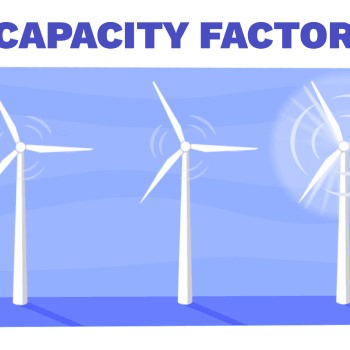 Wind turbines convert the kinetic energy in moving air into rotational energy, which in turn is converted to ...
Wind turbines convert the kinetic energy in moving air into rotational energy, which in turn is converted to ...
 Wind turbines convert the kinetic energy in moving air into rotational energy, which in turn is converted to ...
Wind turbines convert the kinetic energy in moving air into rotational energy, which in turn is converted to ...Basics of Wind Farms
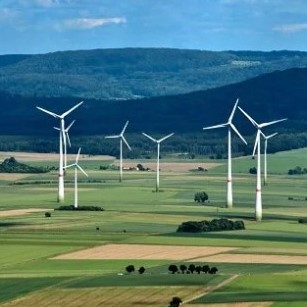 Throughout history, wind has been used to move grain mills or push the vessels that sailed the seas. However, it was not ...
Throughout history, wind has been used to move grain mills or push the vessels that sailed the seas. However, it was not ...
 Throughout history, wind has been used to move grain mills or push the vessels that sailed the seas. However, it was not ...
Throughout history, wind has been used to move grain mills or push the vessels that sailed the seas. However, it was not ...What is Wind Energy?
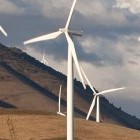 Wind is moving air. We can use the energy in wind to do work. Early Egyptians used the wind to sail ships on the Nile River. ...
Wind is moving air. We can use the energy in wind to do work. Early Egyptians used the wind to sail ships on the Nile River. ...
 Wind is moving air. We can use the energy in wind to do work. Early Egyptians used the wind to sail ships on the Nile River. ...
Wind is moving air. We can use the energy in wind to do work. Early Egyptians used the wind to sail ships on the Nile River. ...Wind Farm Siting, Installation and ...
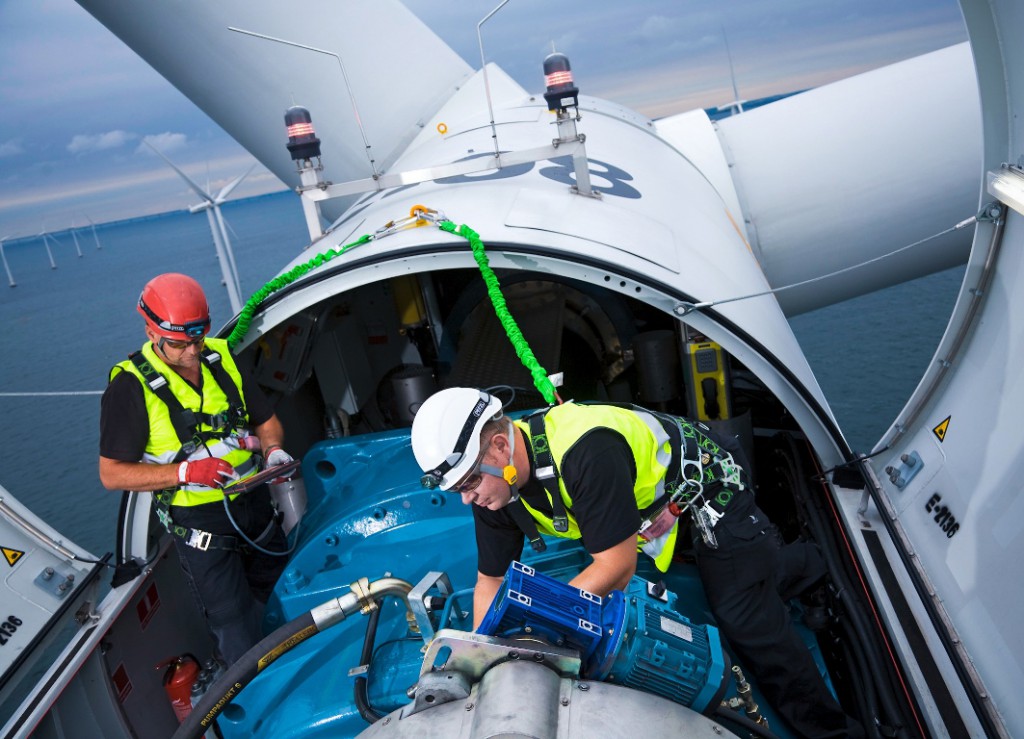 Before wind turbines can be installed, the most appropriate location or locations for them needs to be determined. The ...
Before wind turbines can be installed, the most appropriate location or locations for them needs to be determined. The ...
 Before wind turbines can be installed, the most appropriate location or locations for them needs to be determined. The ...
Before wind turbines can be installed, the most appropriate location or locations for them needs to be determined. The ...Basics of Wind Energy Production
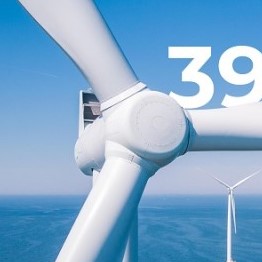 In the United States, most wind energy is commercially generated for delivery and sale on the grid. Wind projects vary in ...
In the United States, most wind energy is commercially generated for delivery and sale on the grid. Wind projects vary in ...
 In the United States, most wind energy is commercially generated for delivery and sale on the grid. Wind projects vary in ...
In the United States, most wind energy is commercially generated for delivery and sale on the grid. Wind projects vary in ...